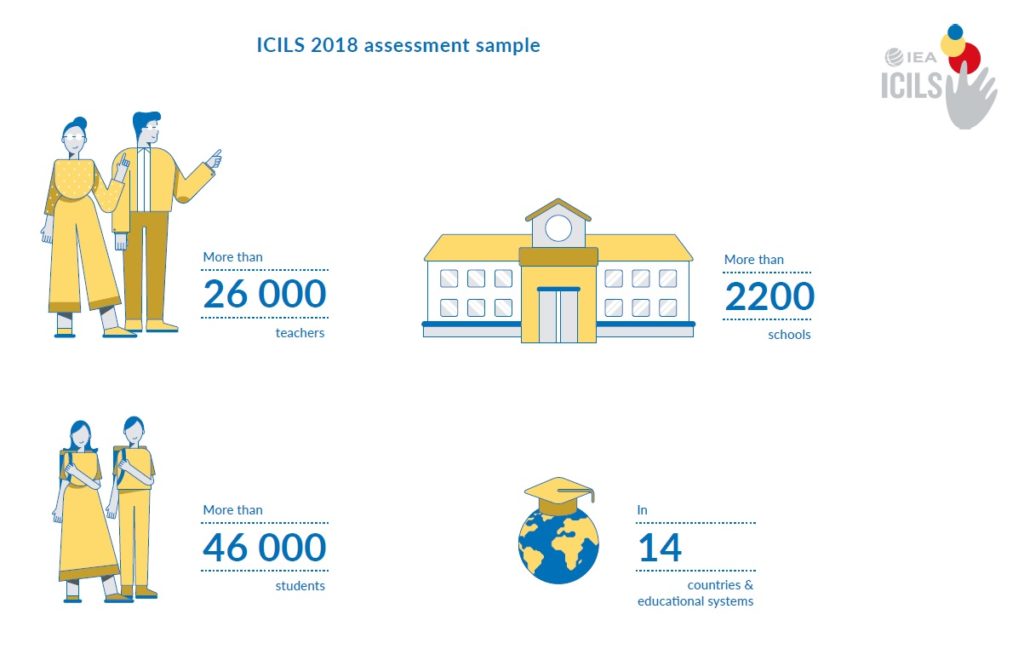
Digitalization of the classroom and computer and information literacy (CIL)
A main issue facing schools today, especially during the COVID-19 pandemic, is the digitalization of the classroom. Especially when resources are lacking, this is a tremendous challenge. Despite this, schools across the globe with students in socioeconomically disadvantaged situations have achieved outstanding results in computer and information literacy (CIL). The recently published study by Kerstin Drossel, Birgit Eickelmann and Mario Vennemann explores a deeper analysis of CIL and these “organizationally resilient” schools.
Organizationally resilient schools have students coming from socioeconomically challenging circumstances achieving above average CIL scores. This study aimed to find such schools and to see if they could be typologically classified according to school and teacher characteristics.
Organizationally resilient schools have students coming from socioeconomically challenging circumstances achieving above average CIL scores.
The CIL scores of eighth grade students from 14 different countries collected by the 2018 IEA International Computer and Information Literacy Study (ICILS: https://www.iea.nl/studies/iea/icils/2018) provided the data for the CIL scores.

For the data on eighth grade students’ socioeconomic situations, the HISEI (an instrument employed to assess students’ socioeconomic statuses) provided an internationally comparable measure of students’ socioeconomic situations.
Three types of schools
Organizationally resilient schools had a) HISEI scores from the lower third of the HISEI spectrum and b) CIL scores in the upper third of the CIL spectrum of their countries, respectively. This made it possible to identify schools with a challenging socioeconomic composition achieving high CIL scores.
The following typology of three types of schools was discovered:
The first type, “competent schools with lack of ICT resources”, (71.8%), the most frequently found except in Chile, was characterized by teachers’ overall positive attitudes towards the potential of ICT and the promotion of CIL on the process level.
“Competent schools” (23.2%) had high amounts of teachers with overall positive attitudes toward the potential of ICT, ICT resource availability and their own ICT-related skills. In this type, close to 60% of teachers incorporated ICT in their lessons daily, but the lack of ICT resources was the highest. It was most frequently found in Chile and the United States.
In the third type, “restrained schools” (5.0%), teachers felt that their school didn’t have limited internet connectivity and less than 5% of the teachers in this group use ICT in their daily lessons. This school type could only be identified in Denmark and Germany.
A great opportunity to learn from one another’s education systems has been exposed through this study.
The percentages were the lowest in Kazakhstan, Luxembourg and Moscow and the highest in Finland with every fifth school being organizationally resilient. A total of 107 organizationally resilient schools were found (5.3% of the schools examined); however, the proportions of vary greatly within each individual education system.

Resilient schools
Several questions remain open such as: What other reasons are there for students at resilient schools to achieve high CIL scores? Could comparing qualitative and quantitative use of ICT by teachers potentially lead to different results?
A great opportunity to learn from one another’s education systems has been exposed through this study. The results highlight the importance of the European Commission’s digital education action plan. Most importantly, they show that schools across the globe with students in disadvantaged socioeconomic situations are successfully creating effective lessons with ICT using the resources they have so that each student can achieve high CIL competencies.
Comments